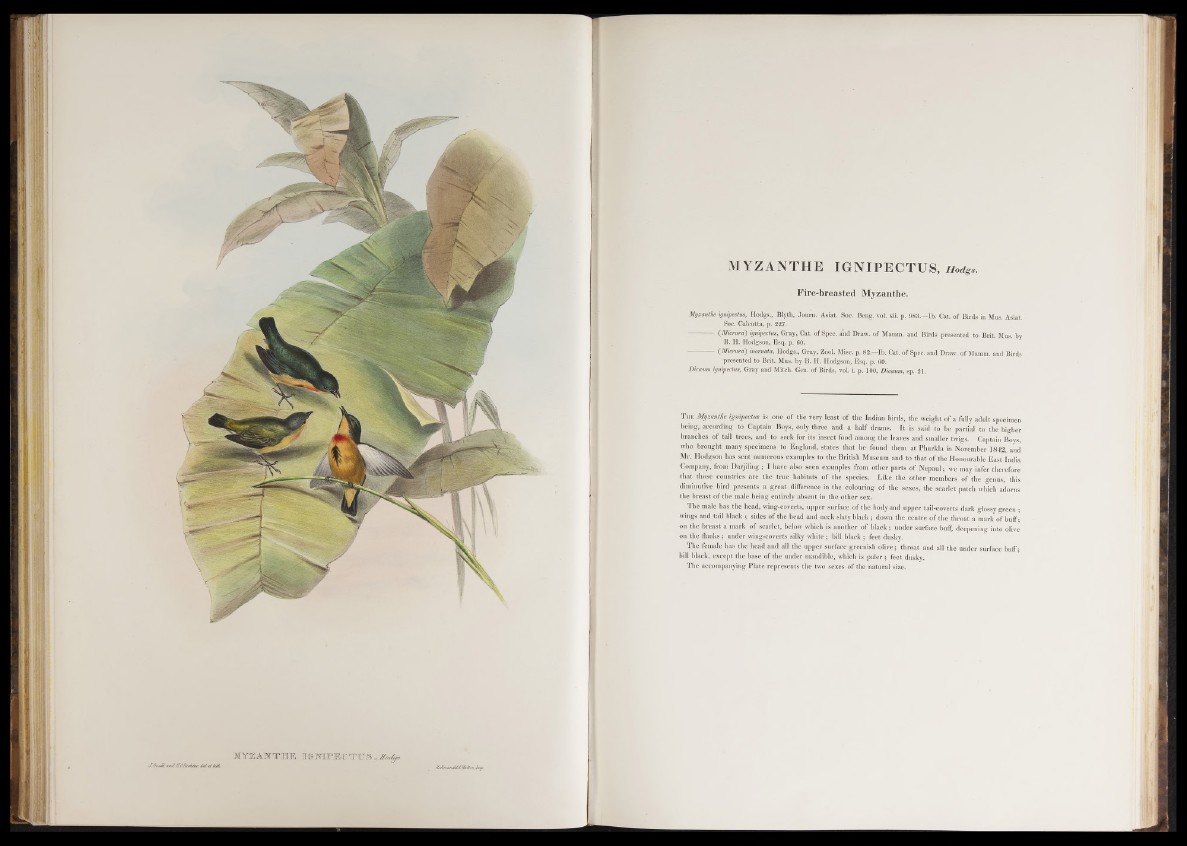
M T Z A K T H E I & M F E C T I I S ,JT o c ^ t.
J.&* eJ<i m <1 JfGJlzcJtfc&', J t/ et&M,. WaUcnfJmp
M Y Z A N T H E I G N I P E C T U S , H o d g s .
Fire-breasted Myzanthe.
Myzanthe ignipectus, Hodgs., Blyth, Joum. Asiat. Soc. Beng. vol. xii. p. 983.—Ib. Cat. of Birds in Mus. Asiat.
Soc. Calcutta, p. 227.
— (Micrwa) igttipectm, Gray, Cat. of Spec, aiid Draw, of Mamm. and Birds presented to Brit. Mus. by
B. H. Hodgson, Esq. p. 60.
— (Micnira) imrnaia, Hodgs, Gray, Zool. Misc. p. 8 2—Ib. Cat of,Spec, and Draw, of Mamm and Birds
presented to Brit. Mus. by B. H. Hodgson, Esq. p. 60.
Dicaum ignipectus, Gray and Mitch. Gen. of Birds, vol. i. p. 100, Dicmrn, sp. 21.
T h e Myzanthe ignipectus is one of the very least o f the Indian birds, the weight o f a fully adult specimen
being, according to Captain Boys, only three and a half drams. It is said to be partial to the higher
branches o f tall trees, and to seek for its insect food among the leaves and smaller twigs. Captain Boys,
who brought many specimens to England, states th at he found them at Phurkla in November 1842, and
Mr. Hodgson has sent numerous examples to the British Museum and to that of the Honourable East India
Company, from Darjiling; I have also seen examples from other parts o f Nepaul; we may infer therefore
that those countries are the true habitats of the species. Like the other members of the genus, this
diminutive bird presents a great difference in the colouring of the sexes, the scarlet patch which adorns
the breast o f the male being entirely absent in the other sex.
The male has the head, wing-coverts, upper surface o f the body and upper tail-coverts dark glossy green ;
wings and tail black ; sides of the head and neck slaty b lack; down the centre o f the throat a mark of buff-
on the breast a mark o f scarlet, below which is another o f black; under surface buff, deepening into olive
on the flanks; under wing-coverts silky wh ite; bill black ; feet dusky.
The female has the head and all the upper surface greenish olive; throat and all the under surface buff-
bill black, except the base o f the under mandible, which is p a le r; feet dusky.
The accompanying Plate represents the two sexes of the natural size.